Finding ways to lessen the burden of manual processes for your sales team helps increase productivity. In a fast-paced environment, the more time spent with customers instead of handling data entry, the better chances of landing a deal.
Increasing return on investment (ROI) and improving sales numbers are crucial for companies in the B2B industry. By implementing workflow automation into your business, lead generation will become smoother and your team should see a boost in sales growth.
Use the links below to “jump ahead”, or keep reading to learn all the best ways to use automation to help scale your business:
- What Is Workflow Automation?
- Using Workflow Automation for Lead Generation
- How Sales Workflow Automation Software Can Increase Sales Productivity & Growth
- Top 5 Workflow Automation SoftwarePlatforms
What Is Workflow Automation?
Simply put, workflow automation handles repetitive manual tasks, automates them, and saves your business precious time and resources. By shifting the work from an employee to software, automation can eliminate mistakes, speed up the flow of things, and help improve overall performance.
The goal of this strategy is to reduce the time employees spend handling tedious tasks. Freeing up this time for your sales staff should provide them with more opportunities to spend bringing in new customers and nurturing existing ones. The automated tasks should be parts of the workflow that require little intellectual input, such as data entry.
Another reason to implement automation is to reduce errors. Increasing efficiency is more than simply doing tasks quickly.
By eliminating human mistakes, automation can help your team run smoother with accurate information. This can be as simple as software capturing contacts rather than a salesperson typing out a profile.
Workflow automation is important for companies who want to remain competitive within their industries. This can help management audit processes due to the visibility created through automation. By seeing the workflow from top to bottom, teams can eliminate redundant tasks that clog up the pipeline.
Performance tracking can also benefit from automation. For those driven by key performance indicators (KPIs), like sales, automating a workflow to track productivity can help employees see where they work best and which areas need improvement. This data can help boost sales and push your sales team to a higher performance level.
This can also help improve the overall customer experience (CX). Eliminating errors and freeing up resources allows your customers to have a smoother experience with your product. Salespeople can also provide more availability for customers to help work through any product issues.
Automation can help increase communication across departments and break down silos. Sales and marketing work closely together, and automated workflows can eliminate overlap in tasks like lead generation. Accurate data entry and fewer mistakes can also improve the quality of leads as they enter your sales funnel.
Using workflow automation for lead generation is a great way to boost sales productivity. This technology can help gather contact details, track website engagement, and introduce sales representatives to new, qualified leads.
Using Workflow Automation for Lead Generation
Moving leads through the pipeline is crucial for ending the cycle with a purchase. It can be tedious tracking leads, generating contact information, and updating their stage in the sales cycle. Workflow automation for lead generation can help improve the process, cut down on redundant tasks, and increase overall lead quality.
This type of strategy does more than input leads into your CRM. Automation helps place leads into different sales stages when certain actions are completed. It can also move unresponsive leads from the sales pipeline, which helps your team focus on prospects most likely to convert.
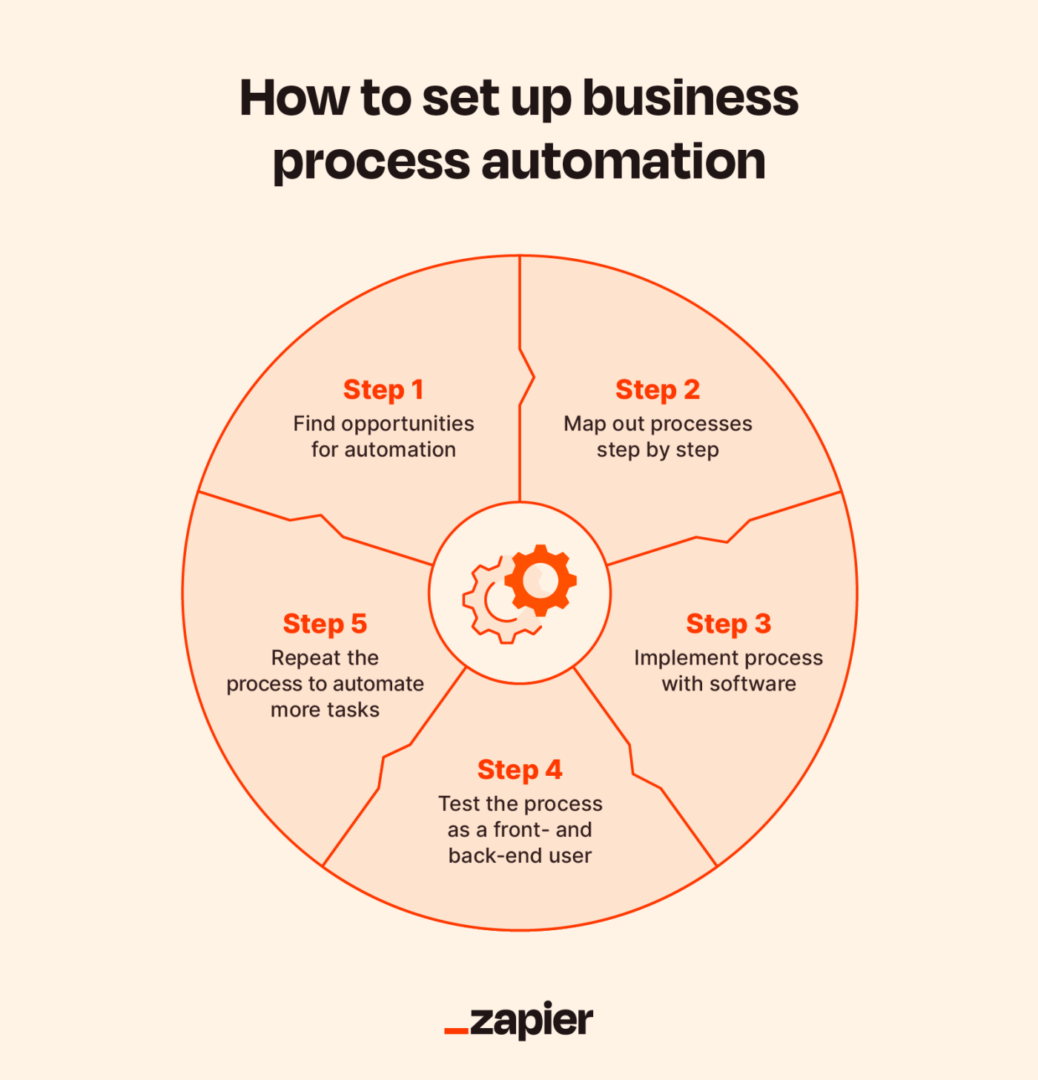
Using automation can ensure leads are introduced to sales representatives at the right time in the buying process. For example, using trigger points in email campaigns or on the website can create a workflow. This would have sales representatives automatically assigned to leads once a call-to-action has been completed.
By having an automatic outreach plan, your team can be sure to connect with leads in a timely manner. In turn, the sales conversation will begin while the prospect is still in need of your company’s solution.
Workflow automation can help keep your CRM and data as up-to-date as possible. Tracking and updating information in real-time as leads work their way through the sales pipeline helps your team eliminate any duplication. This allows marketing and sales teams to know which leads are ready to convert, and which need to be nurtured through outreach.
Automation for lead generation can also help score and qualify leads to increase the overall quality of prospects. By tracking website and content engagement, as well as other factors, scoring leads can help your sales team determine which prospects are ready for outreach. Your team will better determine which customers can benefit from your product as a solution to their needs and will boost the overall CX.
How Sales Workflow Automation Can Increase Sales Productivity & Growth
Almost everyone has heard the saying “Work smarter, not harder.” In sales, this mantra is important to boosting overall growth.
Rather than getting bogged down in repetitive, daily tasks, sales teams should be focusing most of their time leading prospects through the pipeline. 50% of the time spent on sales is wasted by performing unproductive prospecting.
In an industry where time is invaluable, knowing that much of a sales representative’s day is wasted on mindless tasks is obviously cause for concern among business leaders. In addition, the “Harvard Business Review” reveals that incorrect, outdated, or bad data adds $3 trillion in costs to US businesses every year. Utilizing workflow automation for your sales department can cut down on inefficiency and improve data quality.
Part of the reason bad data costs companies is the manual labor required by employees to fix mistakes. By introducing an automated workflow for collecting information, your team can allow the software to take the burden of cleaning data. This ensures your salespeople are working with the most up-to-date client information and can help leads be reached at a quicker pace.
Rather than spending their time searching for contact data or trying to determine if a lead is a good fit, your sales team can rely on automation to sort this information.
An automated sales workflow can also increase productivity across your team. Salespeople will be able to complete their jobs with fewer resources, including less time spent on mundane tasks, which helps avoid bottlenecks within the process. Automation standardizes much of the sales cycle, which allows your team to funnel leads through the pipeline quickly and efficiently.
Teams experience better communication and increased collaboration. Software allows access to real-time updates in the automated process.
This allows sales and marketing to align their efforts and adjust as needed to provide prospects with the best experience possible. Automation also demands more accountability from your employees, so it’s easier to understand who is responsible for specific tasks.
Sales workflow automation can also help reduce costs within the department. Cutting down on manual tasks lowers the employee turnover rate while providing better customer service. This helps retain clients at a higher rate, which should lead to an increase in ROI.
Top 5 Workflow Automation Software Platforms
Choosing a quality workflow automation software will add an important piece to your tech stack. Using a platform that integrates with your current tools is a great way to reduce extra costs. For companies who want to get the most out of sales automation, check out the following workflow automation software options.
1. Zapier
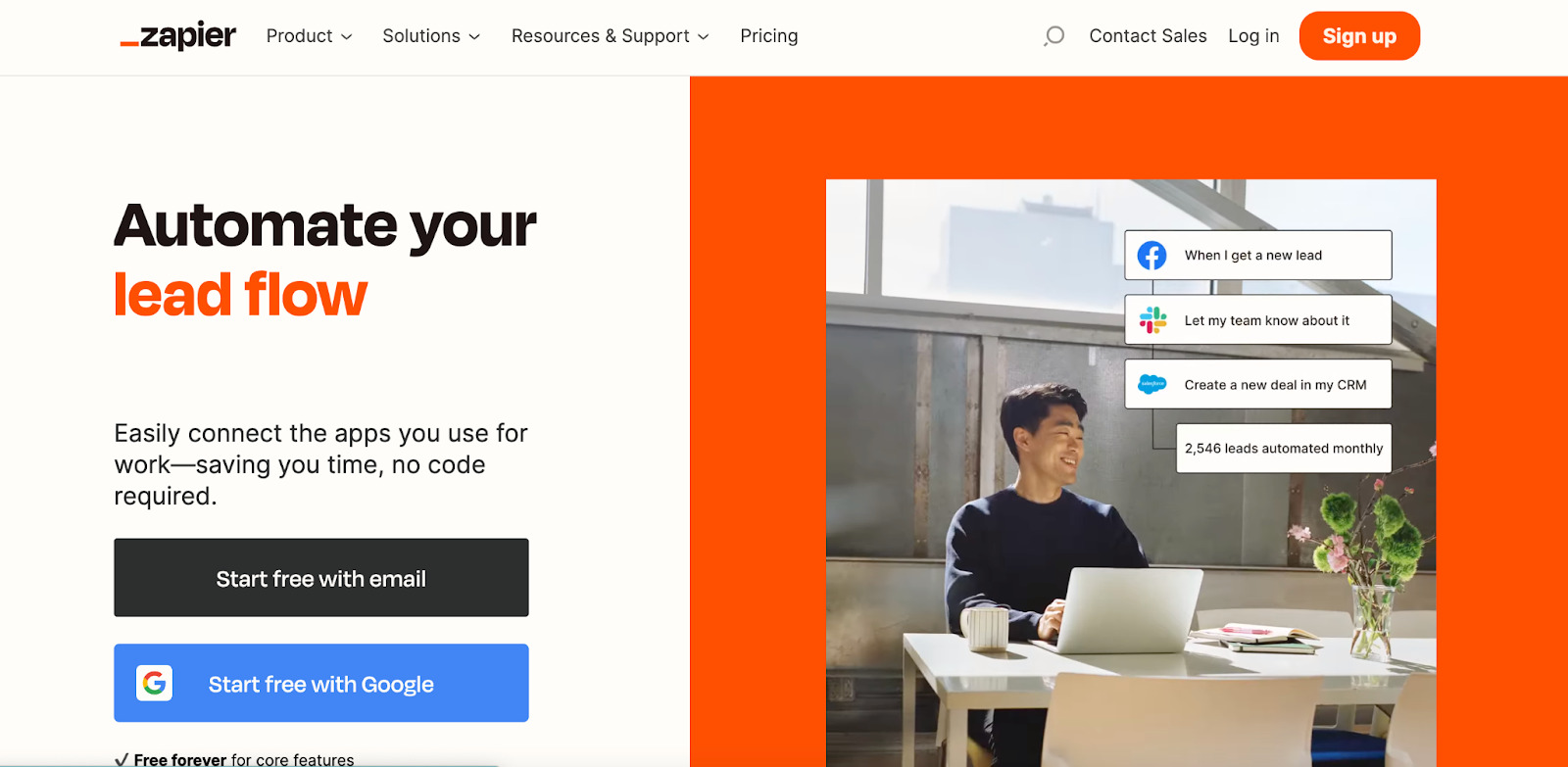
This platform helps streamline your processes and works with specific apps to make sure information gets to the right place. Zapier stands out due to its number of app integrations, including Leadboxer for lead generation, qualifying, and scoring. This software can help your team create workflows that allow your apps to talk to each other.
Pricing starts at $19.99/month (per user).
2. ClickUp
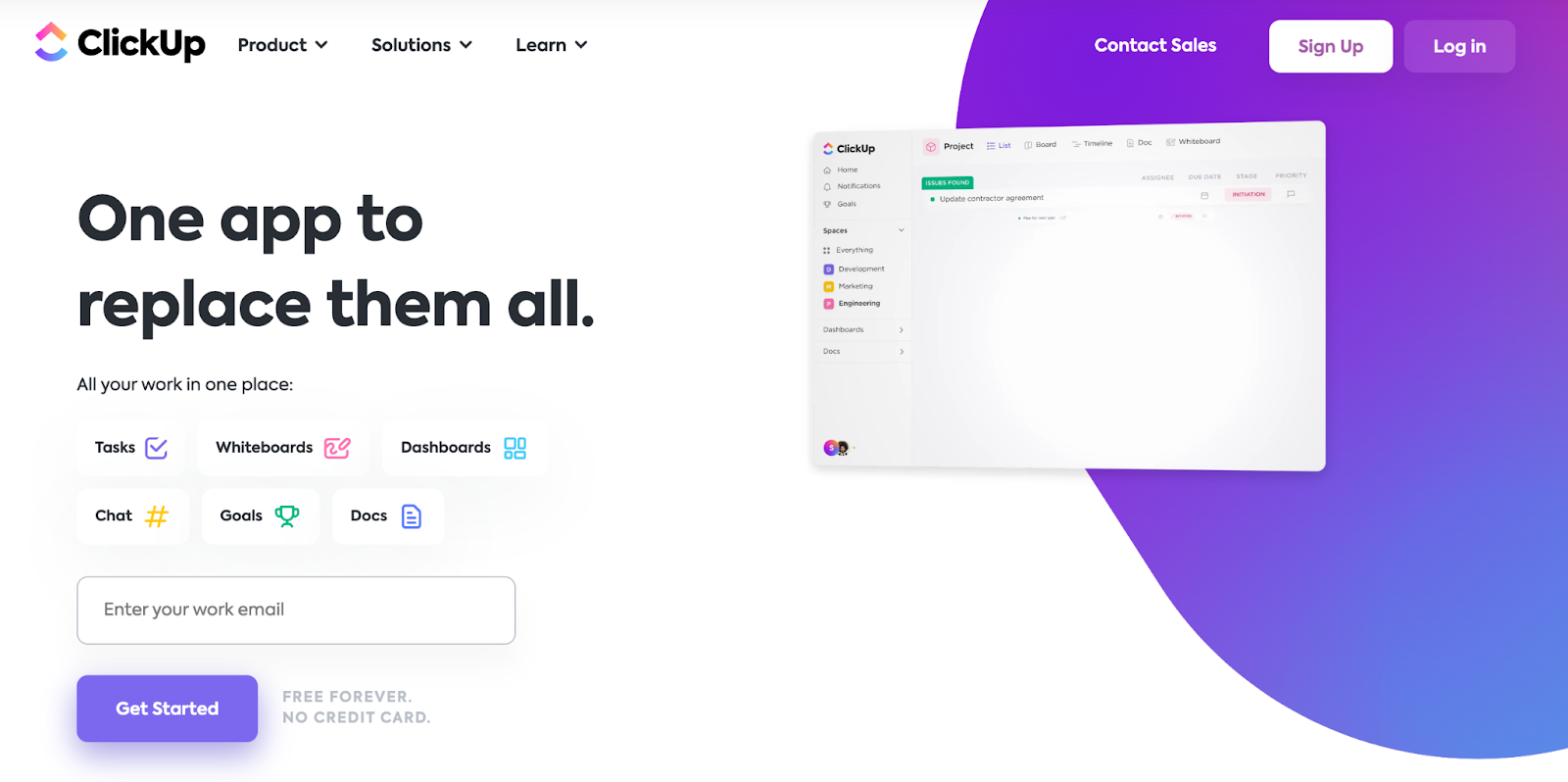
ClickUp is great for increasing productivity and managing a team. It also works nicely with external apps to help create an efficient workflow for your department. The automation is pretty simple. Your team only has to decide which action needs to occur once a trigger point has been reached.
Pricing varies based on your needs, but for $5/month per member, your team can have access to the unlimited plan.
3. KissFlow
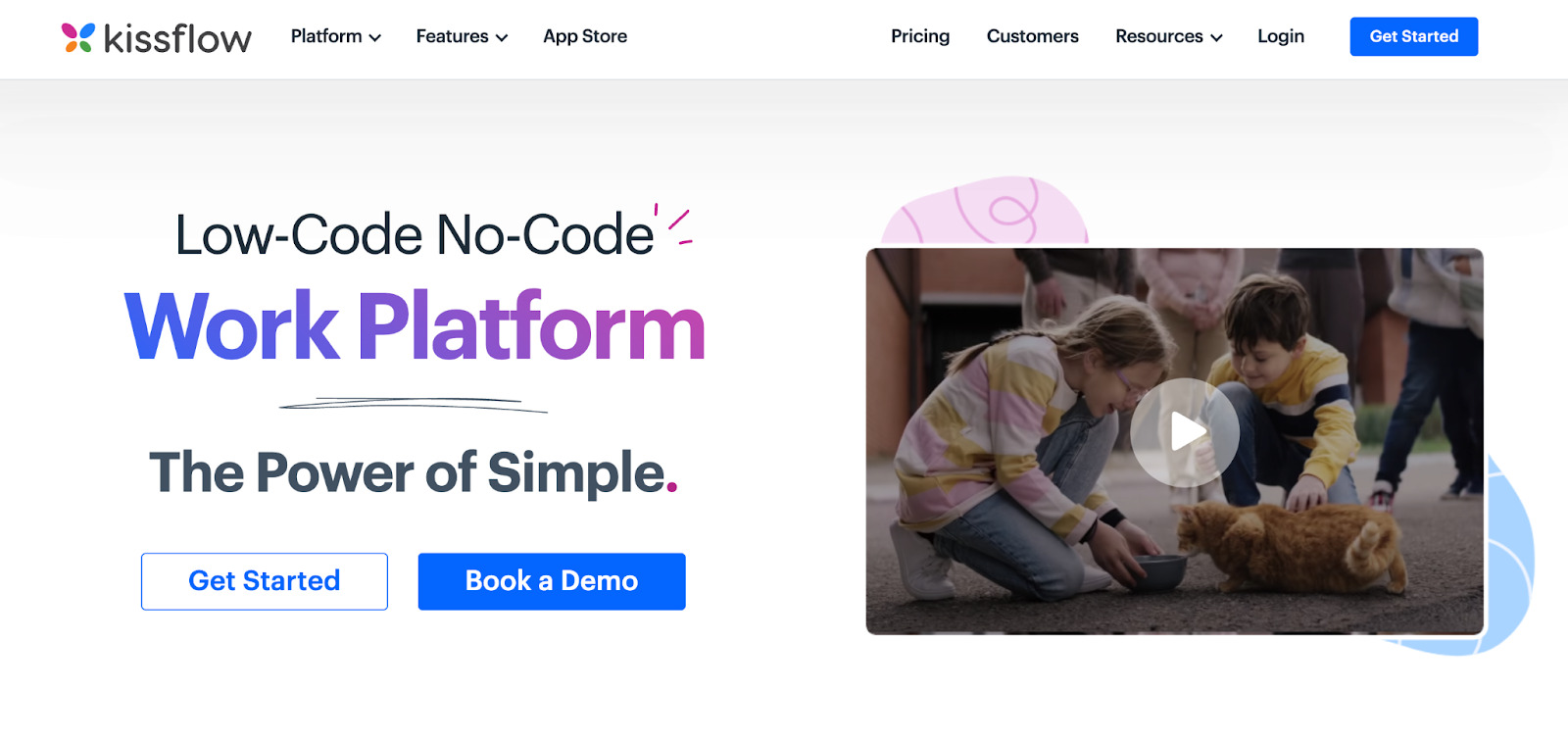
For a simple option that may be a great fit for companies beginning their automation journey, check out KissFlow. This platform is use-friendly, which helps your team easily adapt automation into their daily routine.
Plans start at $200/month.
4. Integrify

Looking for software that’s great for team collaboration? Integrify may be a good fit. This platform streamlines your processes while allowing notes and sequential flows, which encourage teamwork.
Pricing varies, so speak with a sales rep to get a quote.
5. Flokzu
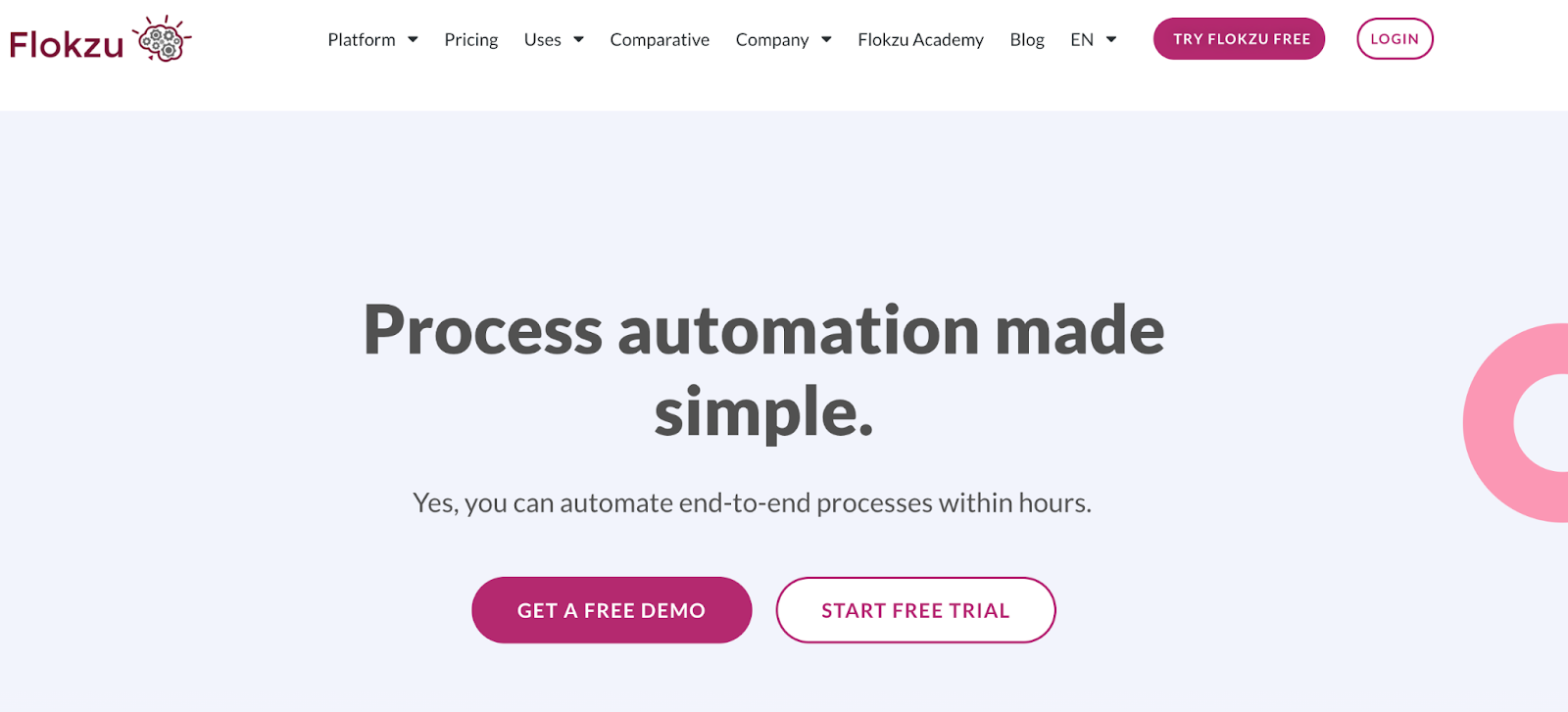
A great platform for project management, Flokzu can help create tasks and send notifications to your team. Their reporting feature is great for tracking metrics and team performance.
A starter plan begins at $19.99/month.
